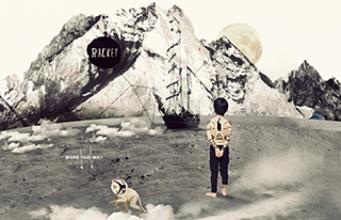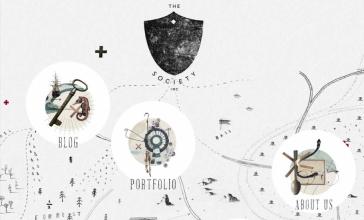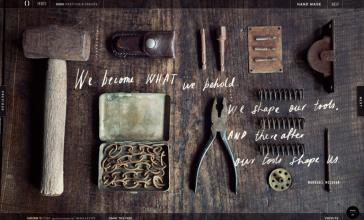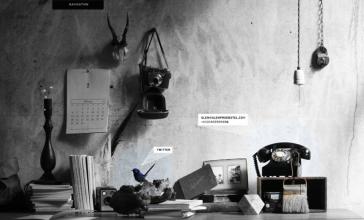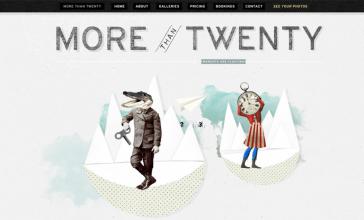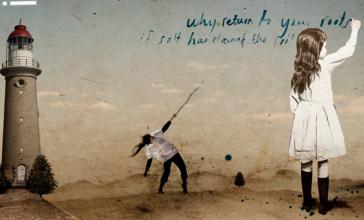Interview: Racket
It is often said that the process of making
something is as interesting (if not more interesting) than the final
outcome. Or to put another way, the journey is better than the
destination.
Often with art and design we only ever see the finished product. What we
don't see is what has happened to get to that point. Where do ideas
come from? How does our life experience influence the things we create?
How many ideas were tested and discarded before
one stuck? For a practicing designer, how can you anticipate these
processes to place a price on your work before it’s made?
To start can you tell us a little about Racket and how it came to be? Where did the name come from?
Racket is a partnership of Rachel Peachey and Paul
Mosig. We met at Canberra School of Art and started off collaborating on
exhibitions of photography, video and collage. We were doing the
occasional design job to supplement our art practice
but then we moved to Melbourne and were expecting our first child so we
decided to focus more on design for a while. When we were spending most
of our time on our art work and only doing a few design jobs now and
then, we used the name Racket as it is an old
slang word for an occupation or business or an easy and profitable
source of livelihood, which was in contrast to our art practice. By the
time we started to take our design work more seriously the name had
stuck.
Your work seems to incorporate a heavy sense of place, space and
displacement of objects. Where do you think you draw your inspiration
from when starting a new project?
Like anyone who works in a creative field, we
are always exploring different aesthetics and being inspired by things
that we find interesting (which is almost anything). When we start a new
project we are drawing from this understanding
of the visual world and together with the client brief, we start to
build a narrative that feels right. We almost always work with people
whose projects we have some affinity with
and therefore it's generally not too much of a jump to work out where
they are coming from. When we are working on our own projects the
process is quite similar, there are just not as
many limiting factors unless we create them for ourselves.
I’m interested in how you start a project and manage your time vs
income which I know is hard for most designers. How do you go about
creating concepts and gauging if your ideas are what the client is after
before spending hours in the studio actually making
the work?
This is a hard question to answer as it's always a
bit different. A lot of work as a design professional is about
communication and building and managing relationships. Sometimes it's
really easy and the first idea we develop and send through
is approved and we move on. Other times we labour over something for
ages until we are happy it's going in the right direction and then the
client just isn't in to it, no matter how much we explain how we got to
this point and why we think it works. I am not
sure there is a magic solution for this. We always try to be very up
front and open with our clients from the start of a project and hope
they are the same with us and this way we can move through the process
fairly smoothly without too much conflict.
A lot of your work looks like the kind of fun and experimentation one
would expect from studio projects rather than commercial projects. How
did you get into the ideal position of being known for a unique design
style and having clients come to you because
of that. Rather than having to fit into existing ideas and styles
brought to you by the client? Which I’m sure is the norm for a number of
designers that work with small businesses on a low budget.
Most of our first clients found us through our art
work, which at that point had a very particular style. These first
projects formed the basis of our portfolio and people would
then approach us because of this. We have been lucky in this
way and we also think because there is just the two of us and we
communicate directly to all of our clients and not through an account
manager, we get to explain our ideas personally which helps.
I’m interested in whether you also dabble in other art forms and if
so, how does that cross over to what you do as a visual artist /
designer?
We work in quite a few different mediums both
commercially and for our own visual art and it all crosses over, as
everything we do furthers our understanding of things and gives us ideas
for what might come next. We exhibit photography
and assemblages, we make videos for clients and for ourselves, we have
been working on some ceramics with one of our neighbours and we have
been renovating an old house and garden, all of which influences our
perspective on art and design.
What is your opinion on design crowd sourcing websites and what
effect do you think this is having on small design individuals and
studios and design in general?
We are not huge fans of the practice as it
essentially means there are a lot of people working for the chance to
get paid and most of them won't. However it doesn't personally impact on
us directly, as the jobs that are currently offered
on these sites are generally not the kind of jobs we want to be doing.
We have sympathy for small businesses that need someone to do a small
job for them and don't really know how to engage with the design
industry or how to find a designer. We are also sensitive
to the fact that if you aren't getting any offers of work and you don't
have much of a portfolio, it could be a way of developing this. Not
many studios we know want to be doing hundred dollar logos but I guess
if someone feels that this would be an acceptable
price for them then I am not sure it is our place to tell them they
shouldn't.
On a practical level, do you have any advise to young designers on
how to approach new work, how to estimate time and cost required in
creating work that is both rewarding to do but also meets the
expectations of the client brief?
Ha! We have got better at this over time but it is still hard to work
out and we still sometimes get it wrong. I guess you have to have
confidence in your work and be able to communicate that well. You need
to record all the time you spend on a project until
you have a better sense of how long different types of jobs might take.
In terms of creating rewarding work, for us this means working with
good people. We have been able to work with interesting people through
having an interesting portfolio and that started
with doing self-initiated projects
– making zines, videos, a self-published
book and exhibiting. Doing these types of things meant our folio
started off reflecting our interests and then each new job we get builds
on that.
For more details about Racket visit: www.racket.net.au
Print Together - online fast printing service in Melbourne and whole Australia
